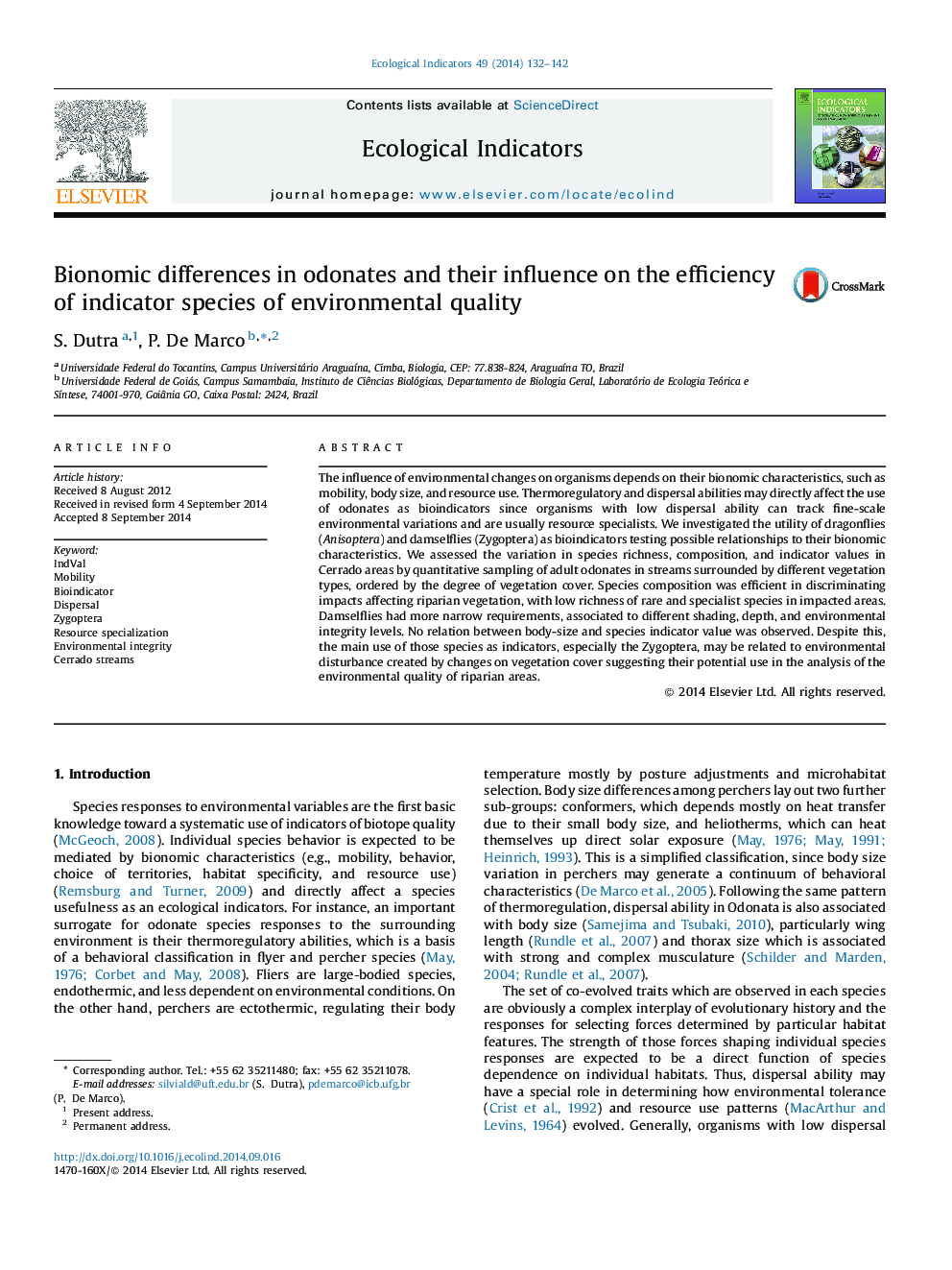| Article ID | Journal | Published Year | Pages | File Type |
|---|---|---|---|---|
| 6294799 | Ecological Indicators | 2015 | 11 Pages |
Abstract
The influence of environmental changes on organisms depends on their bionomic characteristics, such as mobility, body size, and resource use. Thermoregulatory and dispersal abilities may directly affect the use of odonates as bioindicators since organisms with low dispersal ability can track fine-scale environmental variations and are usually resource specialists. We investigated the utility of dragonflies (Anisoptera) and damselflies (Zygoptera) as bioindicators testing possible relationships to their bionomic characteristics. We assessed the variation in species richness, composition, and indicator values in Cerrado areas by quantitative sampling of adult odonates in streams surrounded by different vegetation types, ordered by the degree of vegetation cover. Species composition was efficient in discriminating impacts affecting riparian vegetation, with low richness of rare and specialist species in impacted areas. Damselflies had more narrow requirements, associated to different shading, depth, and environmental integrity levels. No relation between body-size and species indicator value was observed. Despite this, the main use of those species as indicators, especially the Zygoptera, may be related to environmental disturbance created by changes on vegetation cover suggesting their potential use in the analysis of the environmental quality of riparian areas.
Related Topics
Life Sciences
Agricultural and Biological Sciences
Ecology, Evolution, Behavior and Systematics
Authors
S. Dutra, P. De Marco,
